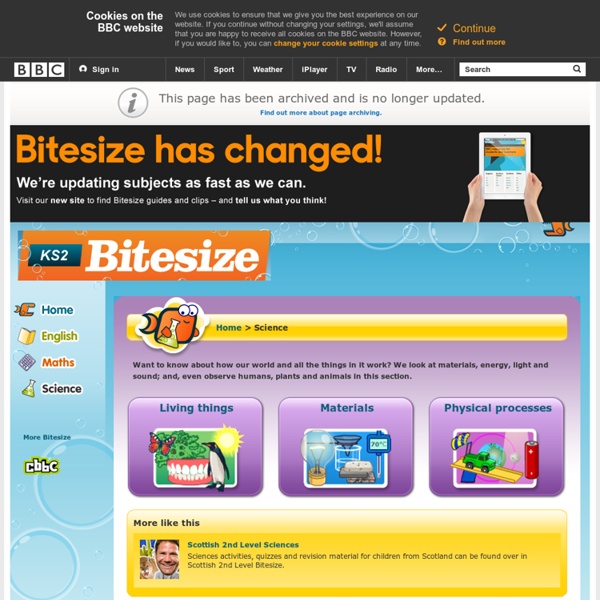



http://www.bbc.co.uk/bitesize/ks2/science/
Related: Am I a Brainiac?Albert Einstein Facts, Quotes, Relativity Theory, Science Information Albert Einstein was born on the 14th of March 1879 and died on the 18th of April 1955. Born in Germany to a Jewish family, Einstein made many contributions to the field of theoretical physics. Even when very young, Einstein showed great ability in both math’s and science. The Physics Classroom Topics 1-D Kinematics The motion of objects in one-dimension are described using word, diagrams, numbers, graphs, and equations. Newton's Laws Newton's three laws of motion are explained and their application to the analysis of the motion of objects in one dimension is discussed. Vectors - Motion and Forces in Two Dimensions Vector principles and operations are introduced and combined with kinematic principles and Newton's laws to describe, explain and analyze the motion of objects in two dimensions.
Wet Rocks Save the cities’ drinking water! Groundwater supplies many major cities throughout the world with drinking water. Contamination of that water is a serious threat. Stop the Gnomes before it’s too late. Danielle10:00 NASA Kids' Club Skip to main content NASA Kids Club › Text Only Site Let's Go to Mars! Plan. Kids - Albert Einstein Biography Albert Einstein was born as the first child of the Jewish couple Hermann and Pauline Einstein, nee Koch, in Ulm on March 14, 1879. When Albert’s grandmother saw him for the first time she is said to have cried continuously: "Much too thick! Much too thick!" But despite all fear the development of young Albert was a normal one. In November 1881 Albert’s sister Maria – called Maja – was born.
KS2 Science Finding out how you move and grow. Can you label the human skeleton? When you've finished move onto the animal skeletons. Do you know which groups living things belong to? Games and Puzzles Science Games Who Wants to Win $1,000,000? - Answer 15 science and math based questions correctly and become a (pretend!) Science edu games Finding out how you move and grow. Can you label the human skeleton? When you've finished move onto the animal skeletons. Do you know which groups living things belong to? Look at the plants and animals as they go past. Can you drag them into the correct groups? Thomas Edison Facts for KidsEasy Science For Kids Do you love your cell phone? How about movies or your digital camera? Thomas Edison invented early versions of these modern marvels. He also invented the electric light bulb. Imagine how different life was before his inventions.